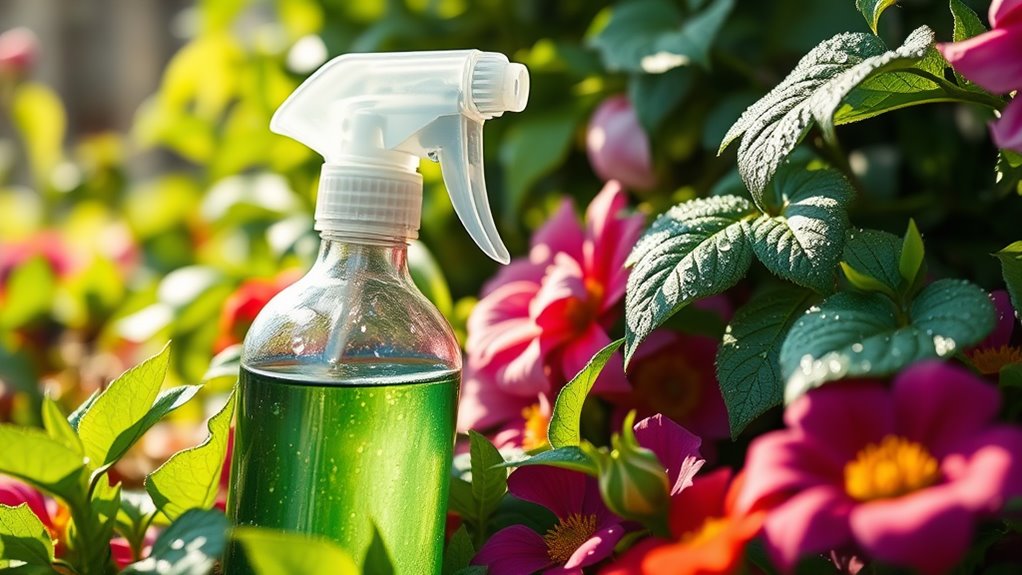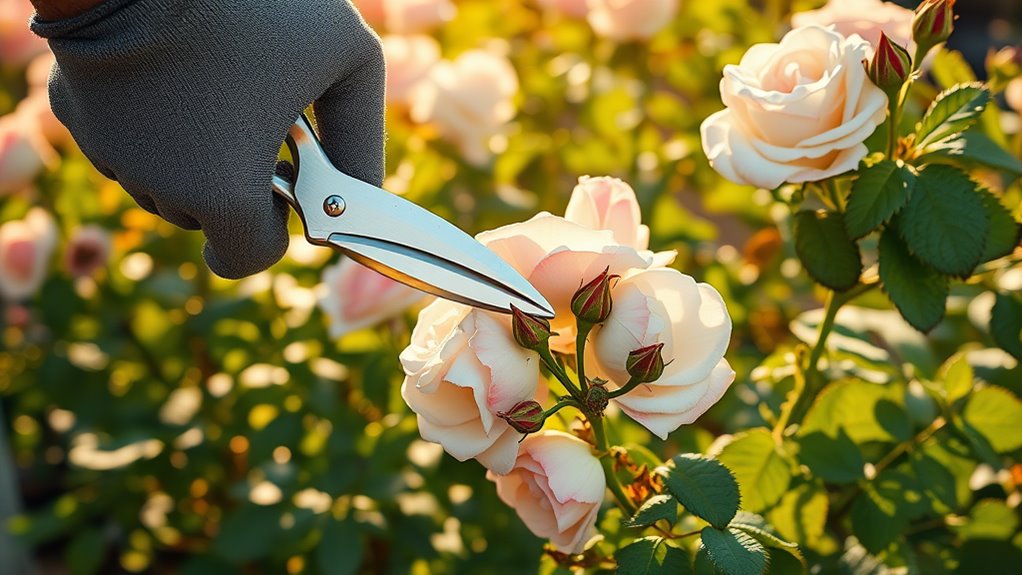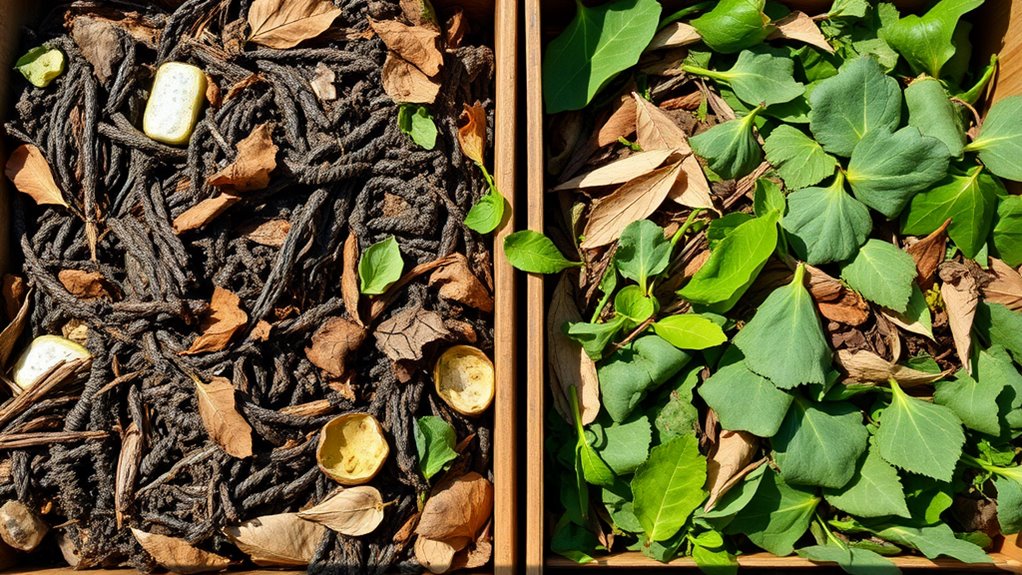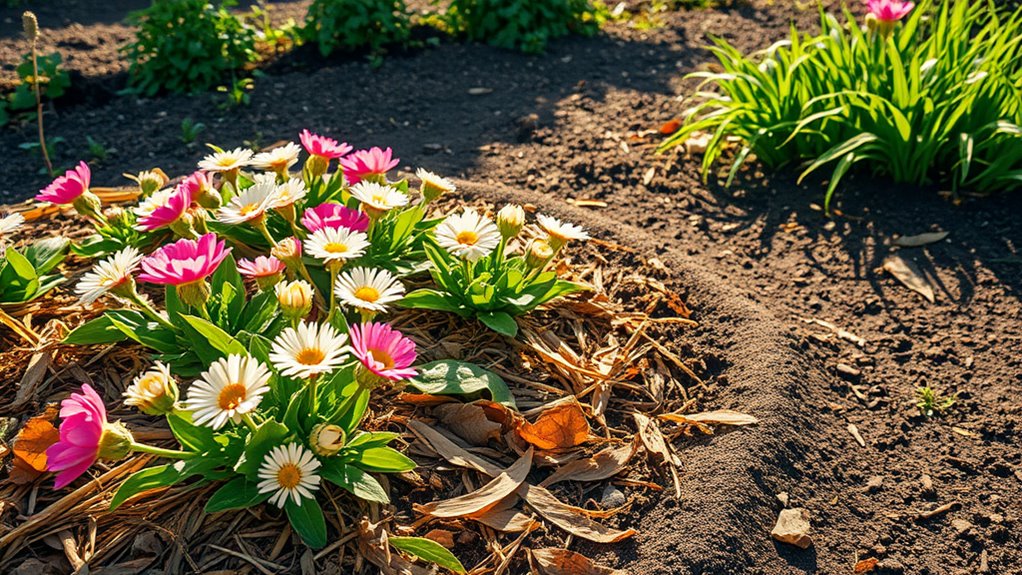This DIY Pest Spray Is a Game-Changer for My Garden
You’ll love how this DIY pest spray transforms your garden, using simple ingredients like garlic, onions, dish soap, and neem oil to naturally repel aphids, caterpillars, and slugs. It’s quick to mix and apply, boosting your plants’ health without harsh chemicals for a vibrant, eco-friendly space. Stick with us to uncover full recipes, storage tips, and strategies that take your pest control even further.
Key Takeaways
- Natural ingredients like garlic, onions, and essential oils effectively repel pests such as aphids and beetles.
- Prepare the spray by mixing distilled water, dish soap, and neem oil in a clean bottle for easy, safe use.
- Apply the solution directly to pest hotspots during cooler hours for optimal adhesion and plant protection.
- This DIY spray minimizes damage from caterpillars and slugs, boosting plant health and growth naturally.
- Pair the spray with companion planting to enhance pest prevention and promote an eco-friendly garden ecosystem.
Essential Ingredients for the Spray
To make an effective DIY pest spray, you’ll need a few key ingredients that target garden pests without harsh chemicals. These easily accessible staples help ensure a healthy garden ecosystem.
For homemade pest control, garlic and onions act as natural repellents, disrupting pests like aphids and beetles with their strong odors. Liquid dish soap serves as a surfactant, helping to penetrate insect exoskeletons.
Essential oils, such as neem for broad-spectrum defense or peppermint to deter spiders, add potent botanical power. White vinegar adjusts acidity to ward off ants and other invaders.
By using these ingredients, you can create effective natural pest sprays that align with recommendations for maintaining a healthy, chemical-free garden.
Step-by-Step Recipe Preparation
You’ll start by gathering the essential ingredients to ensure you have everything ready for your DIY pest spray. Incorporating unconventional remedies helps make this spray highly effective against pests.
Next, mix the solution following precise steps to create an effective blend.
Once prepared, store the spray in a suitable container to maintain its potency.
This spray aids in minimizing chemical use to support a healthier garden environment.
Gather Ingredients
First, round up these key ingredients for your DIY pest spray: 1 cup of distilled water, 1 tablespoon of dish soap, and a few drops of neem oil.
You’ll find distilled water at most grocery stores; it’s essential for purity to avoid harming plants. Choose a mild, fragrance-free dish soap, as it effectively targets pests without residue.
Neem oil, a natural insecticide, is readily available at garden centers. Always check for freshness by expiration dates, ensuring your ingredients are potent and ready for use.
This setup is straightforward and cost-effective for garden protection.
Mix Solution
Now, grab a clean spray bottle and pour in the 1 cup of distilled water as your base. This sets the foundation for your effective DIY pest spray.
You’ll mix in the remaining ingredients for maximum potency.
- Add 1/2 cup of white vinegar to break down pests’ defenses.
- Pour in 1 tablespoon of liquid dish soap to suffocate insects on contact.
- Mix in 10 drops of peppermint essential oil for a natural repellent.
- Secure the lid and shake vigorously to blend everything thoroughly.
This simple process creates a powerful, garden-friendly solution you’re sure to love.
Store Spray
Once you’ve mixed your spray, place the bottle in a cool, dark spot to preserve its potency; this prevents degradation from heat or light.
You’ll need a tightly sealed, opaque container to minimize exposure—glass works best for this.
Label the bottle with the date, as the mixture stays effective for up to two weeks.
Shake it gently before each use to ensure even distribution.
For safety, store it out of reach of children and pets, and always wear gloves when handling to avoid skin irritation.
This simple step keeps your spray ready and reliable.
Proper Application Techniques
When applying your DIY pest spray, target the affected areas directly to maximize its effectiveness. This means focusing on pest hotspots like leaf undersides and stem bases, using a steady hand for even distribution and consistent application. Additionally, incorporating natural herbs into your spray can boost its pest-repelling properties based on traditional methods.
-
Select the right equipment: Choose a sprayer with a fine nozzle for precise, even coverage without excess runoff.
-
Time your application wisely: Apply during cooler parts of the day, like early morning or evening, to enhance adhesion and reduce evaporation.
-
Ensure thorough coverage****: Spray all plant surfaces, including stems and soil, until lightly coated but not dripping.
-
Follow safety protocols: Wear gloves and avoid windy conditions to prevent accidental exposure or drift.
These techniques contribute to natural DIY methods that help create a pest-free garden without any financial investment.
Key Benefits for Garden Plants
You’ll see how your DIY pest spray reduces pest damage, shielding your plants from hungry invaders.
It boosts plant health by easing the stress that pests cause, letting your garden bounce back stronger.
Additionally, it leverages organic pest sprays based on my personal experiences shared in the knowledge base.
Best of all, it promotes natural growth, so you’re fostering a vibrant, chemical-free environment.
This approach incorporates natural pest control techniques to ensure long-term garden health.
Reduces Pest Damage
One effective way to protect your garden plants is by using this DIY pest spray, which minimizes damage from common insects.
You’ll notice how it keeps your greens thriving by targeting pests head-on, without harming beneficial insects.
Here’s how it reduces pest damage effectively:
-
Repels aphids quickly, preventing leaf distortion and yellowing for healthier foliage.
-
Deters caterpillars effectively, stopping them from chewing holes in leaves and stems.
-
Disrupts pest cycles, breaking the chain of infestations that lead to widespread plant loss.
-
Shields against borers, protecting roots and fruits from tunneling damage that weakens plants.
Boosts Plant Health
Beyond reducing pests, this DIY spray actively boosts your garden plants’ health by fostering stronger growth and resilience.
It strengthens your plants’ natural defenses, helping them ward off diseases and environmental stresses more effectively. You’ll see enhanced vitality, with foliage appearing vibrant and robust, thanks to improved nutrient absorption.
As an authoritative tip, apply it regularly to maintain this edge; it’s a practical way to ensure your garden stays healthy and productive without relying on harsh chemicals.
This approach empowers you to cultivate a thriving, resilient space.
Promotes Growth Naturally
This DIY spray naturally promotes vigorous growth in your garden plants, harnessing organic ingredients to stimulate root development and enhance photosynthesis.
You’ll notice healthier, more resilient foliage as it delivers essential nutrients directly. Here’s how it boosts your garden:
-
Strengthens roots: Encourages deeper root systems for better water absorption and stability.
-
Boosts chlorophyll production: Enhances photosynthesis, leading to lusher leaves and vibrant colors.
-
Accelerates blooming: Speeds up flower and fruit formation for quicker harvests.
-
Improves overall vigor: Helps plants resist stress, resulting in taller, fuller growth.
Use it regularly to maximize your garden’s potential.
Targeted Pests and Prevention
When creating your DIY pest spray, it’s essential to focus on common garden invaders like aphids, caterpillars, and slugs, which can quickly damage plants if left unchecked.
Aphids weaken plants by sucking sap, leading to stunted growth, while caterpillars chew holes in leaves, and slugs ravage seedlings overnight.
To prevent infestations, you identify vulnerable plants and craft your spray with natural repellents like soap or essential oils that disrupt pest behavior. Integrating eco-friendly weed control methods can enhance your overall garden health alongside pest management.
Early detection through regular checks allows you to apply targeted solutions, minimizing outbreaks and fostering a resilient garden ecosystem without relying on synthetic options.
Additionally, exploring top five pests as key threats can provide further insights into effective management strategies for your garden.
Storage and Usage Tips
Properly storing and using your DIY pest spray ensures it stays effective and safe for your garden.
You’ll extend its shelf life and avoid mishaps by following these guidelines.
-
Store in a cool, dark place****: Keep the spray in an airtight container away from sunlight to prevent degradation.
-
Label and date it: Mark the bottle with the preparation date so you know when to discard it after a few weeks.
-
Shake before use: Always mix thoroughly to ensure ingredients are well-blended for optimal results.
-
Apply sparingly: Use a fine mist on infested plants, targeting pests directly, and avoid overuse to protect beneficial insects.
These steps help you maintain control effortlessly. (99 words)
Real Results in My Garden
Once you store and use the DIY pest spray as outlined, you’ll witness its impact firsthand in your garden.
You’ll see aphids disappear from leaves within days, restoring vibrant growth to your plants. Caterpillars and other pests will retreat, minimizing damage and boosting yields from vegetables and flowers.
This effective formula promotes healthier foliage without chemicals, fostering natural balance.
Monitor weekly; you’ll notice reduced infestations, stronger roots, and increased biodiversity.
Real results mean fewer losses and more enjoyment—apply consistently for sustained protection and a thriving, pest-resistant space.
For even better results, pair this spray with companion planting strategies to naturally enhance plant health and deter pests. As shared in my journey, this can lead to surprising results in your own garden.





